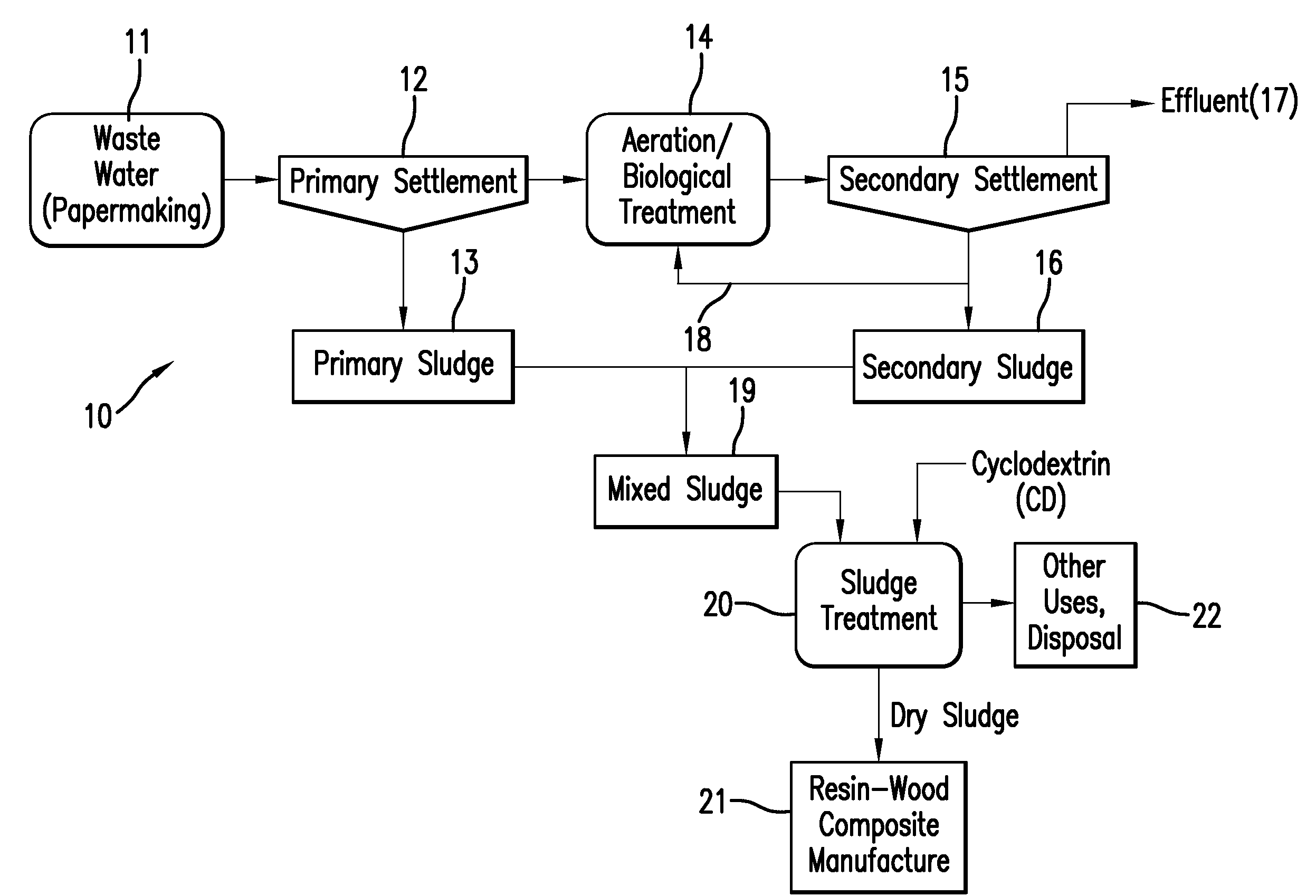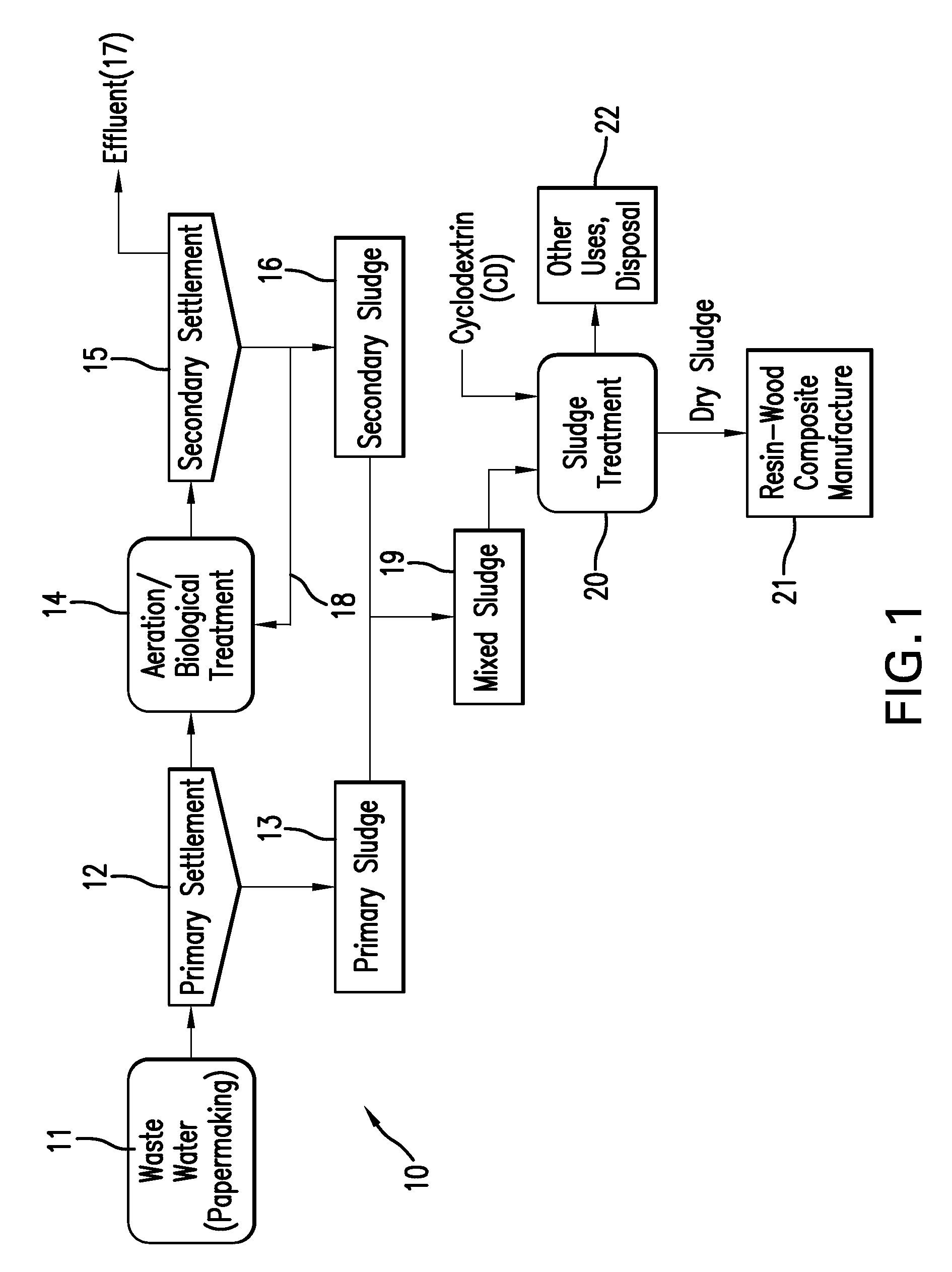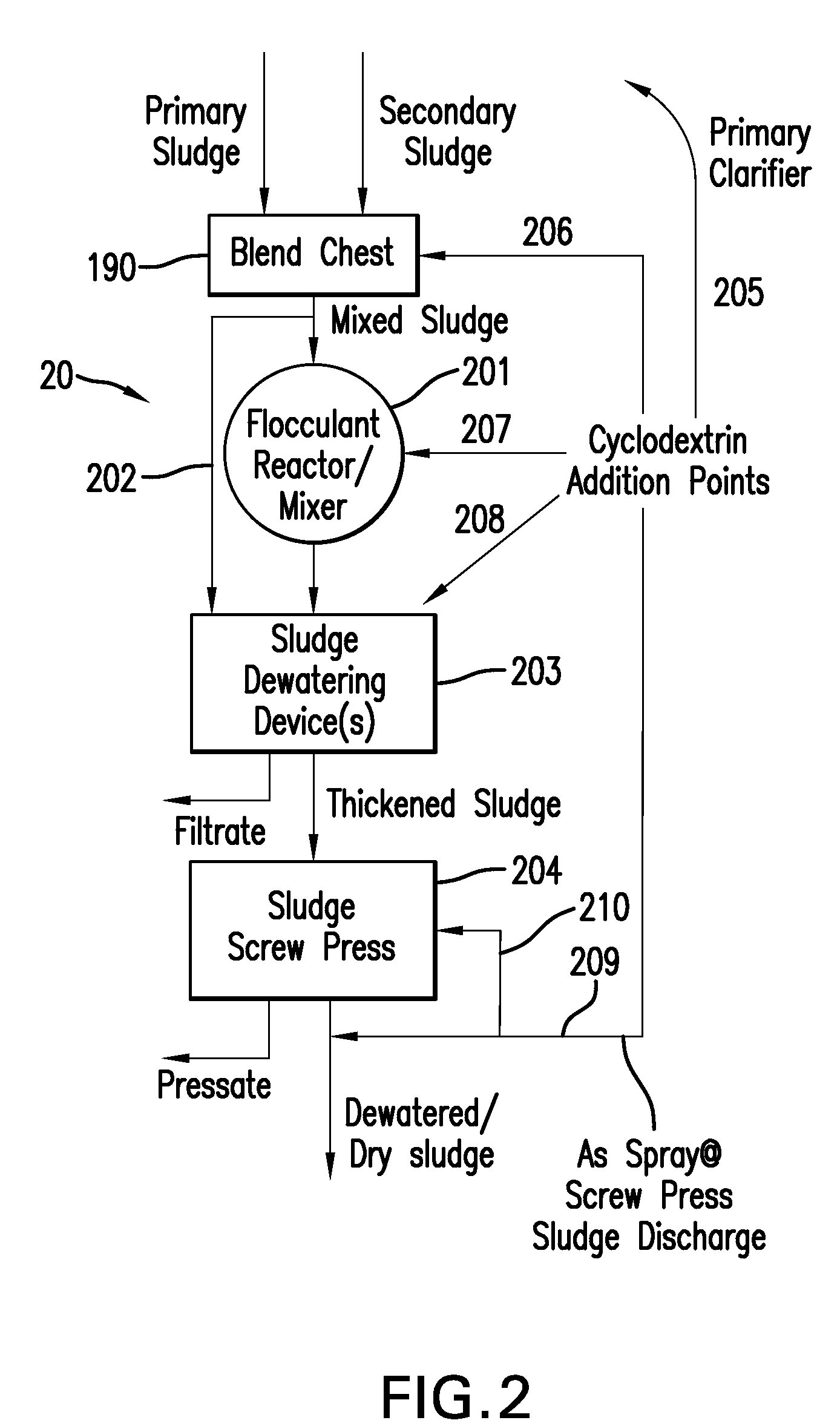Use of Cyclodextrins For Odor Control In Papermaking Sludges, and Deodorized Sludge and Products
a technology of cyclodextrin and papermaking sludge, which is applied in the direction of papermaking, specific water treatment objectives, non-fibrous pulp addition, etc., can solve the problems of large paper mills producing many tons of sludge per day, inability to complete the recovery and reuse of this water and papermaking raw materials, and large quantities of papermaking sludge as a by product. , to achieve the effect of reducing or minimizing odors
- Summary
- Abstract
- Description
- Claims
- Application Information
AI Technical Summary
Benefits of technology
Problems solved by technology
Method used
Image
Examples
example 1
The Effect of Cyclodextrins in Reduction of Measurable Hydrogen Sulfide (H2S) in Papermaking Sludge was Examined
[0056]Test samples were prepared using 200 g of papermaking sludge obtained from MeadWestvaco mill, Mahrt, Ala., which were added to 800 g of 50 mM phosphate buffer solution (pH 7.1). The phosphate buffer was prepared by combining 2.503 g KH2PO4 (anhydrous) / liter and 5.47 g K2HPO4 (anhydrous) / liter. Different forms of cyclodextrin, viz., beta-cyclodextrin and hydroxypropylated beta-cyclodextrin, were tested at different dosage levels in sludge samples.
[0057]When a cyclodextrin (“CD”) was added to a given sample, it was dissolved in the 50 mM buffer solution before sludge addition. Dosages indicated in Table 1 are based on weight of buffer solution. For instance, a 0.5% dosage corresponds to 4 grams of cyclodextrin in 800 grams of buffer solution. 200 g sludge was added to the 800 g cyclodextrin-containing buffer solution, and the resulting mixture was shaken to ensure good...
PUM
| Property | Measurement | Unit |
|---|---|---|
| weight % | aaaaa | aaaaa |
| pressures | aaaaa | aaaaa |
| time | aaaaa | aaaaa |
Abstract
Description
Claims
Application Information
 Login to View More
Login to View More - R&D
- Intellectual Property
- Life Sciences
- Materials
- Tech Scout
- Unparalleled Data Quality
- Higher Quality Content
- 60% Fewer Hallucinations
Browse by: Latest US Patents, China's latest patents, Technical Efficacy Thesaurus, Application Domain, Technology Topic, Popular Technical Reports.
© 2025 PatSnap. All rights reserved.Legal|Privacy policy|Modern Slavery Act Transparency Statement|Sitemap|About US| Contact US: help@patsnap.com



